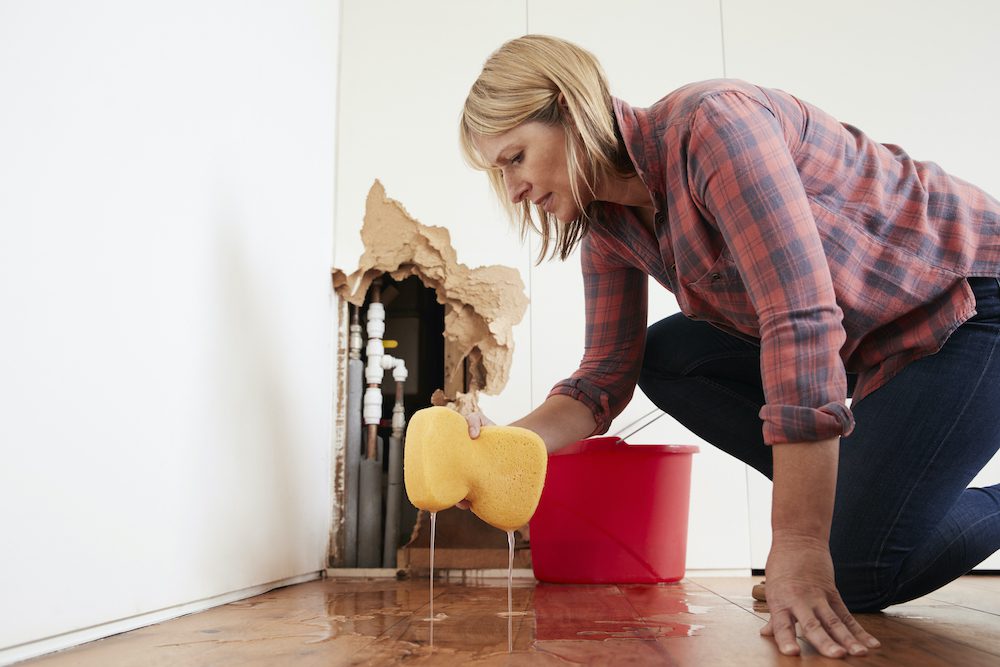In this article below you can find a lot of excellent insights in relation to Hacks to detect leaks.

Early discovery of dripping water lines can alleviate a possible disaster. Some little water leakages might not be visible.
1. Check Out the Water Meter
Every home has a water meter. Examining it is a proven way that assists you find leaks. For beginners, turn off all the water sources. Make sure no person will certainly purge, make use of the faucet, shower, run the cleaning maker or dishwashing machine. From there, go to the meter and watch if it will alter. Because nobody is using it, there should be no movements. That indicates a fast-moving leak if it moves. If you identify no adjustments, wait an hour or 2 and also inspect back once again. This means you may have a sluggish leak that might even be underground.
2. Check Water Consumption
Analyze your water expenses and also track your water consumption. As the one paying it, you must notice if there are any kind of disparities. If you find sudden changes, in spite of your intake being the same, it suggests that you have leakages in your plumbing system. Keep in mind, your water expense should fall under the very same range on a monthly basis. An unexpected spike in your expense indicates a fast-moving leak.
A constant boost every month, even with the very same habits, reveals you have a slow-moving leak that's additionally slowly escalating. Call a plumber to extensively inspect your residential or commercial property, specifically if you really feel a cozy area on your flooring with piping below.
3. Do a Food Coloring Examination
30% comes from commodes when it comes to water usage. Test to see if they are running appropriately. Decrease specks of food color in the tank and wait 10 minutes. If the color somehow infiltrates your bowl during that time without flushing, there's a leakage in between the container and also dish.
4. Asses Exterior Lines
Don't neglect to check your exterior water lines as well. Ought to water seep out of the link, you have a loosened rubber gasket. One little leak can waste bunches of water and also surge your water bill.
5. Evaluate the circumstance and also check
House owners must make it a routine to examine under the sink counters and also inside cupboards for any kind of bad odor or mold growth. These 2 warnings suggest a leak so punctual interest is needed. Doing regular inspections, also bi-annually, can conserve you from a major issue.
If you know your home is already old, keep a careful eye on your heating units, hoses, pipes and so on. Look for stainings and also damaging as the majority of devices and pipes have a life expectancy. They will certainly likewise normally deteriorate as a result of tear and put on. If you presume leaking water lines in your plumbing system, don't await it to intensify. Call an expert plumber immediately so you do not wind up with a terrible mess in your home.
Early discovery of dripping water lines can reduce a prospective catastrophe. Some tiny water leakages may not be noticeable. Checking it is a guaranteed means that helps you uncover leakages. One tiny leak can lose heaps of water as well as increase your water expense.
If you think leaking water lines in your plumbing system, do not wait for it to rise.
WARNING SIGNS OF WATER LEAKAGE BEHIND THE WALL
PERSISTENT MUSTY ODORS
As water slowly drips from a leaky pipe inside the wall, flooring and sheetrock stay damp and develop an odor similar to wet cardboard. It generates a musty smell that can help you find hidden leaks.
MOLD IN UNUSUAL AREAS
Mold usually grows in wet areas like kitchens, baths and laundry rooms. If you spot the stuff on walls or baseboards in other rooms of the house, it’s a good indicator of undetected water leaks.
STAINS THAT GROW
When mold thrives around a leaky pipe, it sometimes takes hold on the inside surface of the affected wall. A growing stain on otherwise clean sheetrock is often your sign of a hidden plumbing problem.
PEELING OR BUBBLING WALLPAPER / PAINT
This clue is easy to miss in rooms that don’t get much use. When you see wallpaper separating along seams or paint bubbling or flaking off the wall, blame sheetrock that stays wet because of an undetected leak.
BUCKLED CEILINGS AND STAINED FLOORS
If ceilings or floors in bathrooms, kitchens or laundry areas develop structural problems, don’t rule out constant damp inside the walls. Wet sheetrock can affect adjacent framing, flooring and ceilings.
https://www.servicemasterbyzaba.com/blog/how-to-detect-water-leakage-in-walls/

I was shown that editorial on Finding hidden leaks through an acquaintance on another web property. Loved our posting? Please share it. Let others locate it. I thank you for reading our article about Hacks to detect leaks.
Comments on “6 Ways to Find Hidden Water Leaks in Your Home”